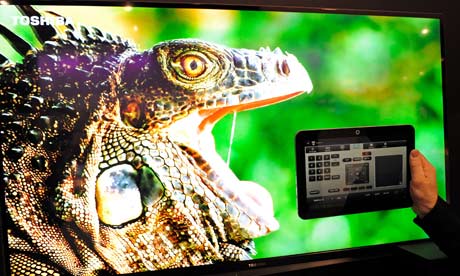I made my debut on NPR this morning, and part of Neda Ulaby's piece on the issues that are holding back tech advances in the TV industry.
Let's call it the baby sitter's dilemma.
If you go to someone's house and pick up the TV remote, chances are, you won't know how it works. You know the situation's bad when even a tech writer who also majored in physics at an Ivy League school is confused by her own TV remote.
"It's unbearable to me," moans Ars Technica writer Casey Johnston, of her remote's many cryptic buttons. "Sub.code? Comp/mix? I couldn't even tell you what one of those things do, but then assign them to the same button? It just doesn't make any sense."
So why, at a moment when both technology and TV shows are so terrific, are interfaces so clumsy and counterintuitive?
By interfaces, I mean both the actual, super-inscrutable remote controls and the unwieldy grid on our screens that many of us are forced to navigate to find what we want to watch.READ THE REST AND HEAR THE INTERVIEW AT NPR.ORG
And I have to confess the entire idea for this piece was inspired by Alan Wolk. His official title is global lead analyst at KIT Digital, and he writes a terrific blog called The Toad Stool. That's where I read his essay, "The TV Business: A Primer For The Uninformed," which elegantly points out how inelegant our TV interfaces are.


